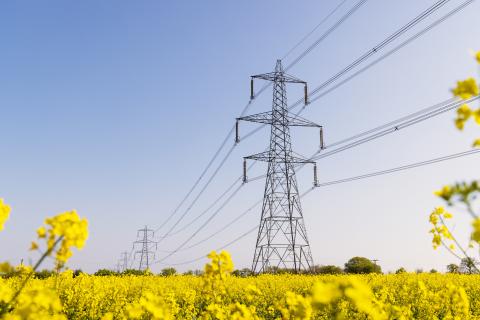Nonprofit’s report finds no Prairie State turnaround
By David Zoeller, Paducah Sun – “Recent data shows ‘no meaningful turnaround’ in the operation of the Prairie State Energy Campus, according to a report by an Ohio-based nonprofit organization that studies energy issues.
Prairie State is the chief supplier of electricity for Paducah Power System customers. Each of its two 800-megawatt generators has been off-line for periods of time as the Illinois plant has gone through an extended shakedown since its opening more than two years ago.
The report, No Evidence of a Turnaround at Prairie State, is written by David Schlissel, director of resource planning analysis for the Institute for Energy Economics and Financial Analysis in Cleveland. The IEEFA is interested in accelerating the transition to “a diverse, sustainable and profitable energy economy and to reduce dependence on coal and other non-renewable energy resources,” according to its website.
Schlissel has worked as a consultant, witness, and attorney on engineering and economic issues in energy and the environment. He attended Tuesday night’s Paducah City Commission meeting in which representatives of Paducah Power and Prairie State made a presentation. The commission did not invite him to speak.
‘After being wrong for 2014, with predictions they made in 2013, they are still very optimistic about their new projections,’ Schlissel said, following Tuesday night’s presentation.
According to Schlissel’s report, recent data from American Municipal Power and Northern Illinois Municipal Power Agency, two of the owners of Prairie State, on the plant’s operating performance and cost of power for the months January through August 2014, indicate:
- Prairie State’s actual operating performance during the eight-month period was 18 percent lower than its owners had budgeted, and the plant achieved an average 64 percent capacity factor, far below the 78.5 percent capacity factor the managers had predicted.
- Prairie State’s actual operating performance May through August was approximately 26 percent below what was budgeted.
‘This continued poorer than predicted performance was significant in that both Prairie State units had completed extended planned maintenance outages by the end of April that were supposed to address problems that had been experienced since startup,’ Schlissel wrote. ‘This poorer than budgeted performance also was important because these months included the peak summer hours during which energy market prices are very high. These are the months when it is critical that the plant perform well.’
- The 64 percent capacity factor that Prairie State achieved during the first eight months of 2014 did not represent a significant “turnaround” from the 58 percent factor that the plant achieved in 2012 or the 60 percent capacity factor it achieved in 2013.
- Prairie State’s operating costs during the first eight months of 2014 were some $4 million higher than had budgeted.
- Prairie State’s total power costs for its owners and the communities that buy power from these owners continue to be very expensive, compared to the cost of buying energy from the wholesale markets.
‘There is no evidence that Prairie State has made, or is on the verge of making, a significant turnabout in terms of operating performance or costs or that the cost of power will be below market prices at any time in the foreseeable future,’ Schlissel wrote. ‘Instead, the cost of power from Prairie State will continue to be much more expensive than buying power from the competitive wholesale markets for many years.’
No link, subscription required
Video of Paducah City Commission Meeting, September 23, 2014













